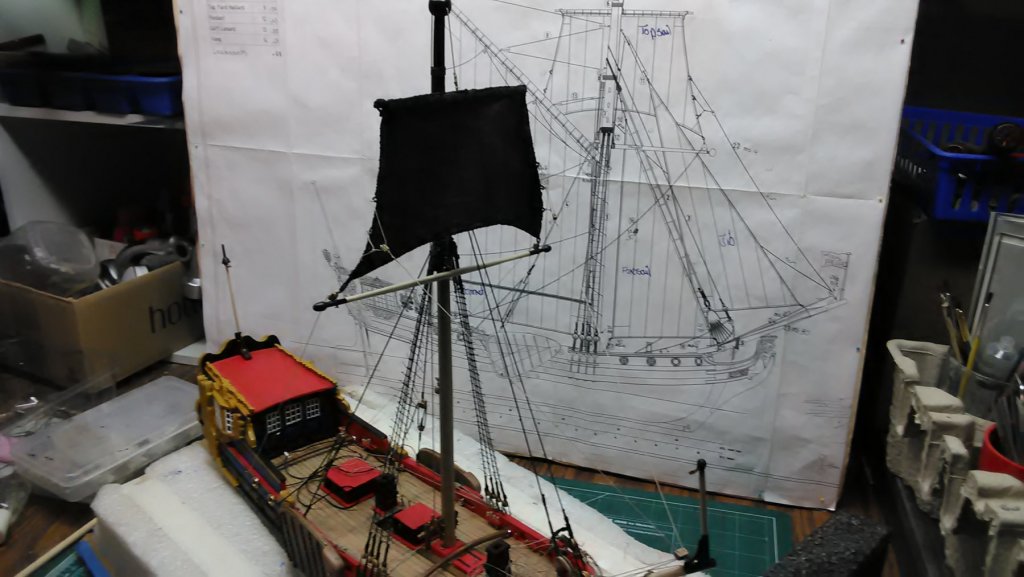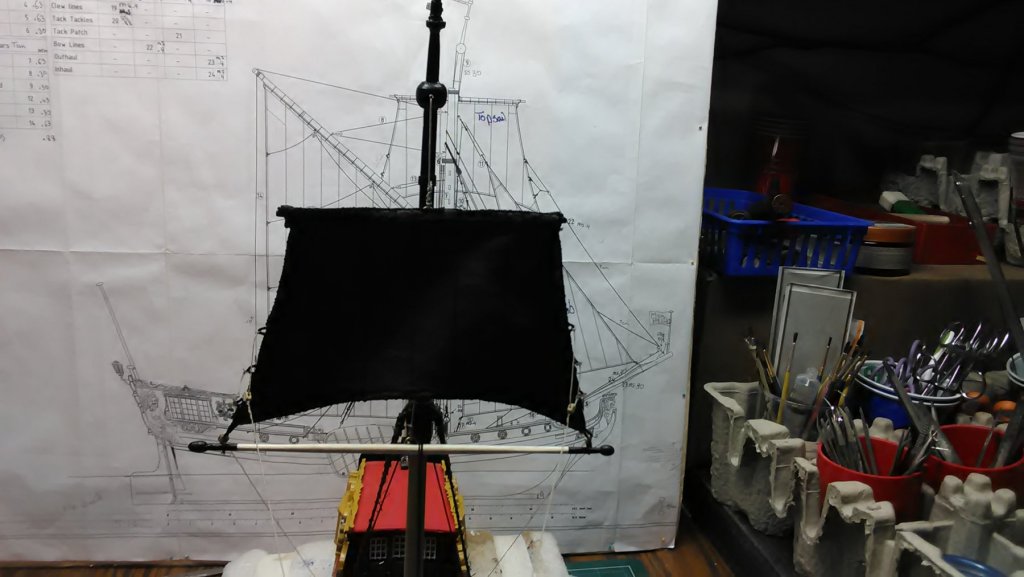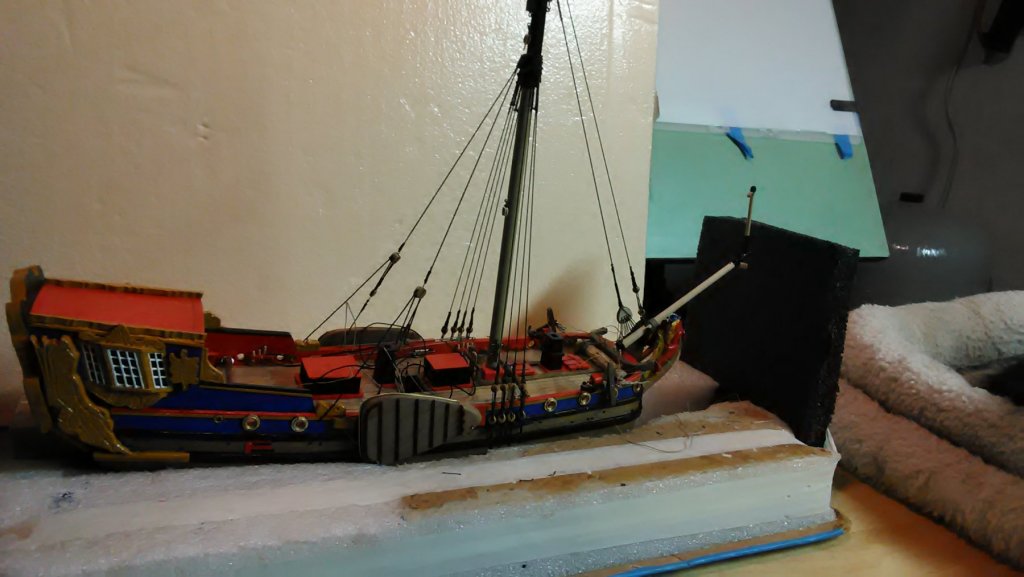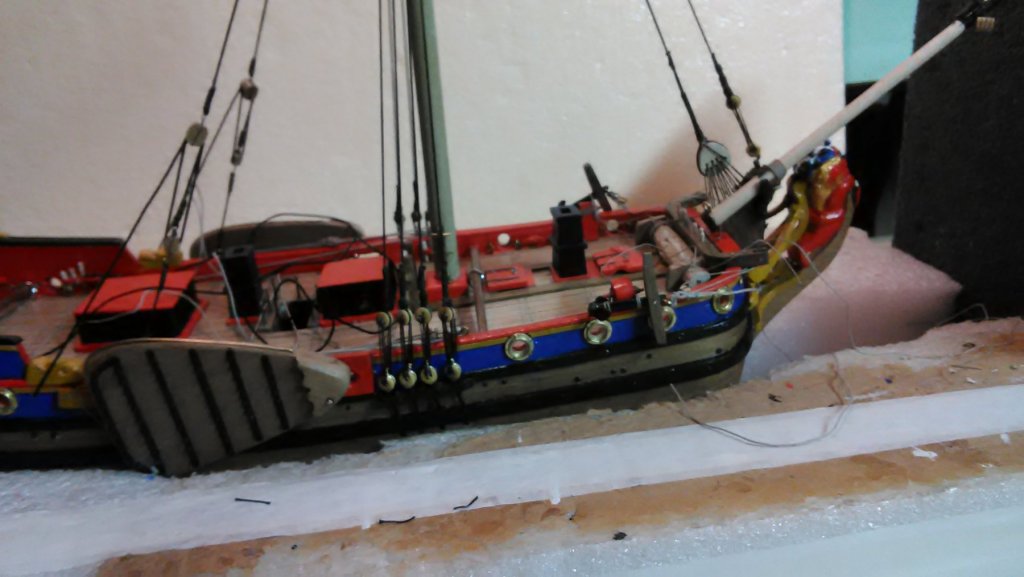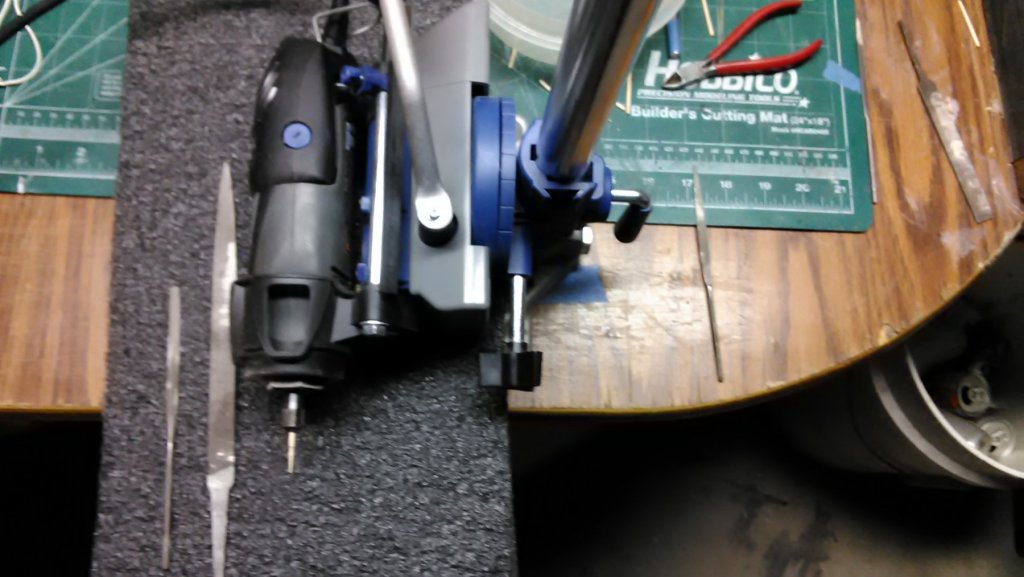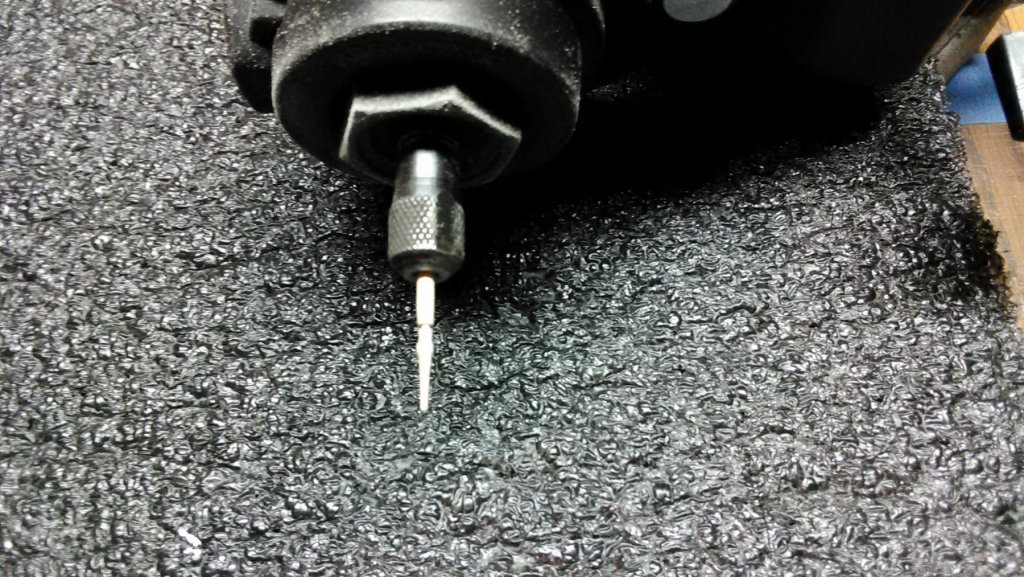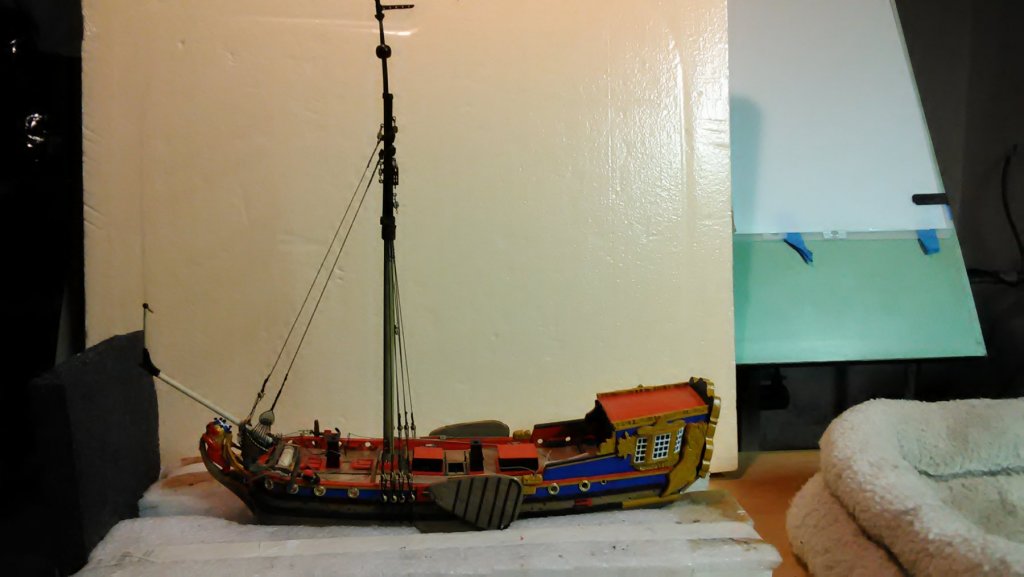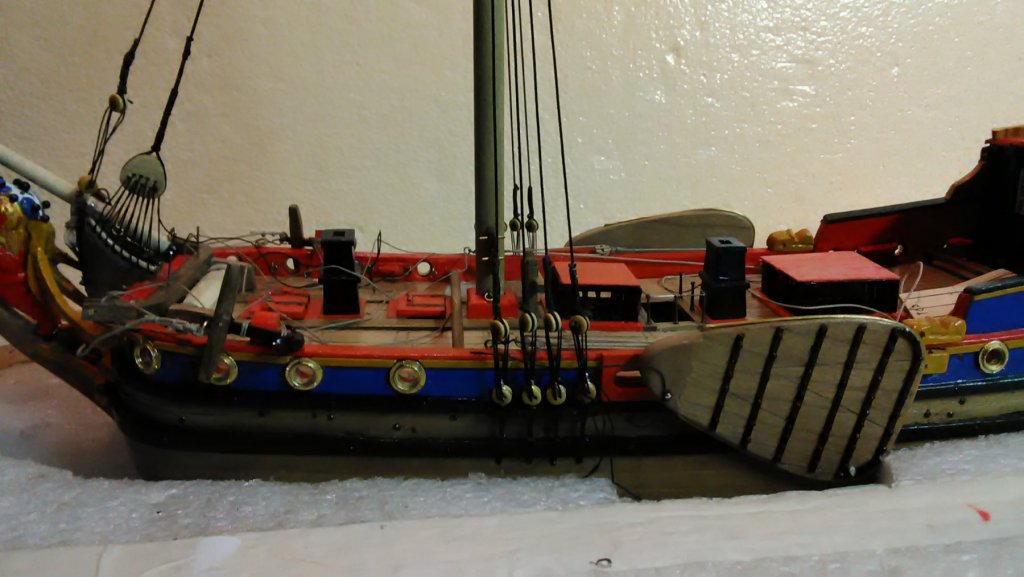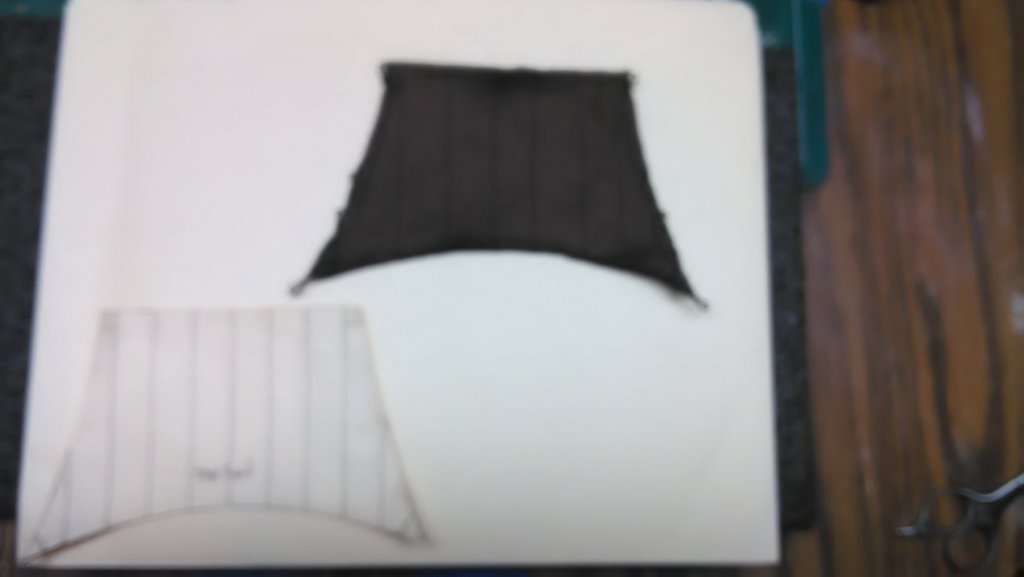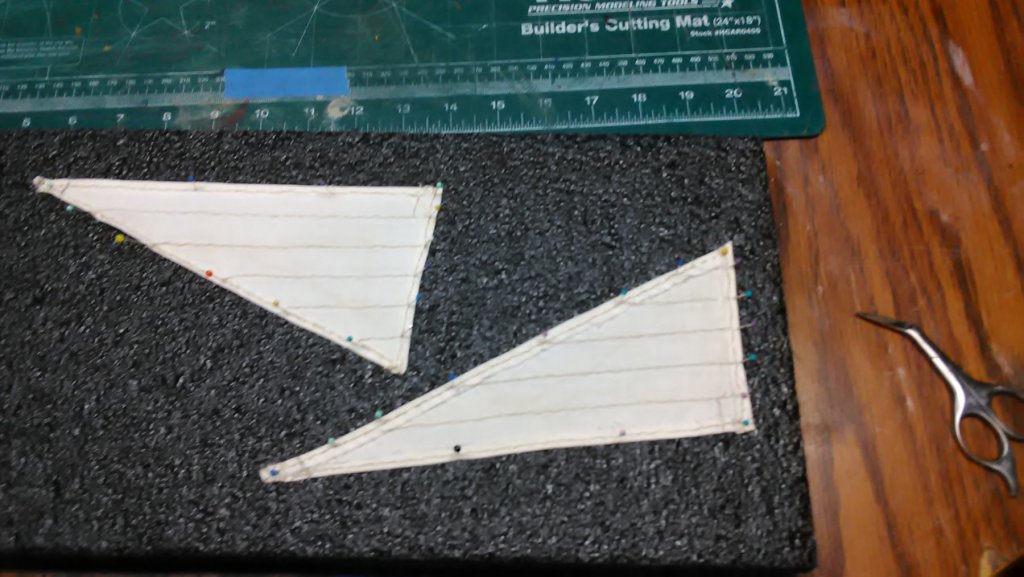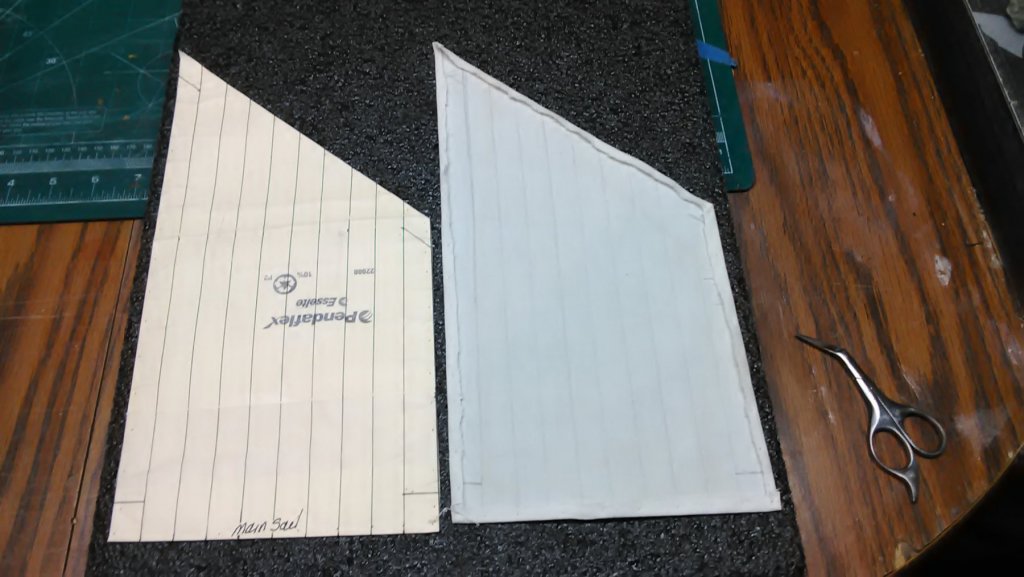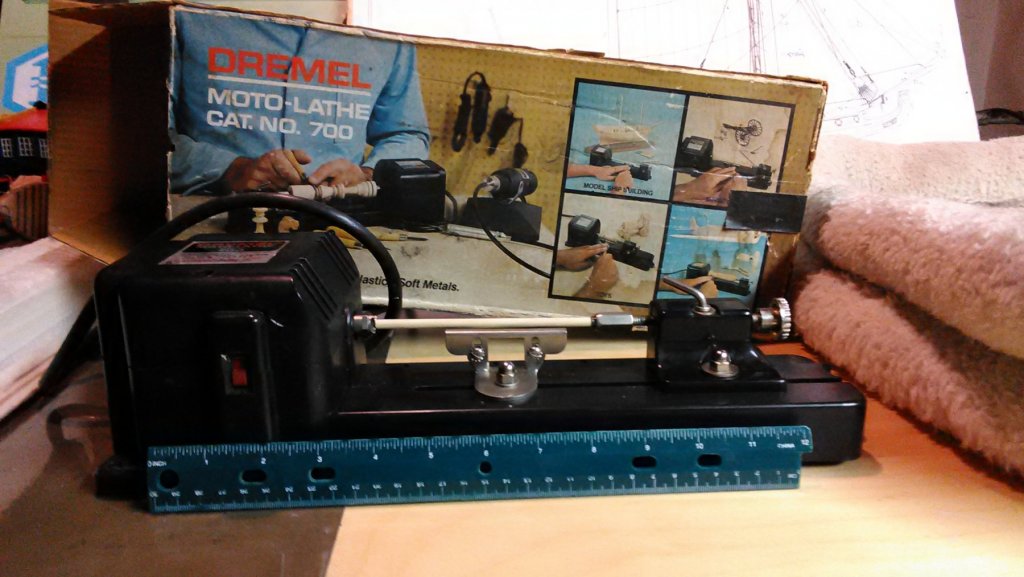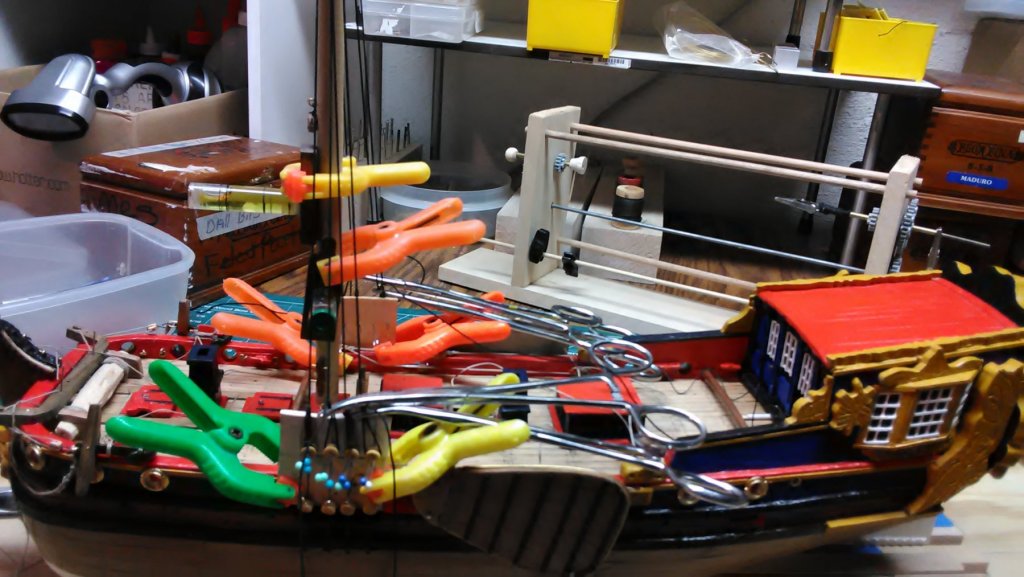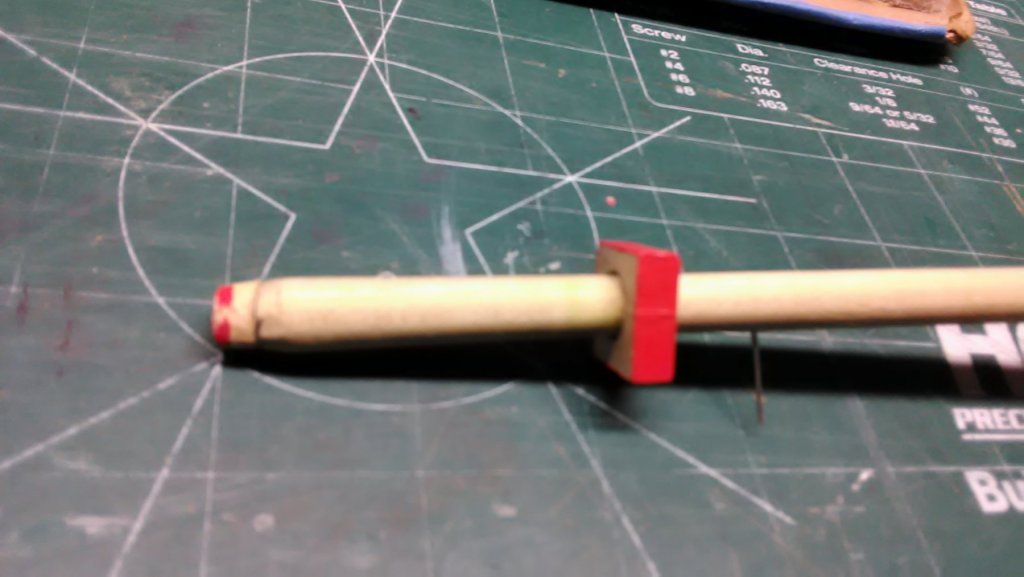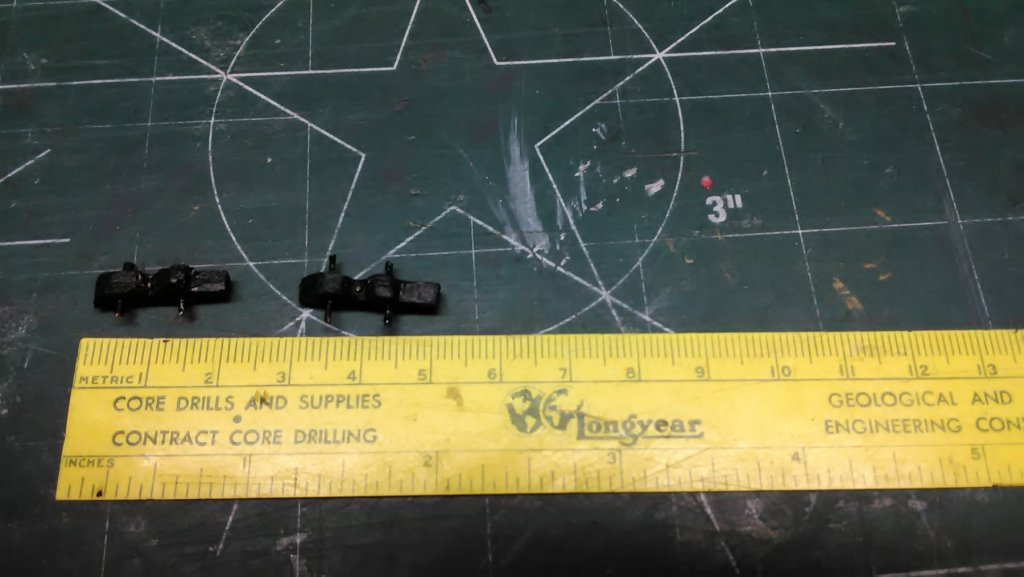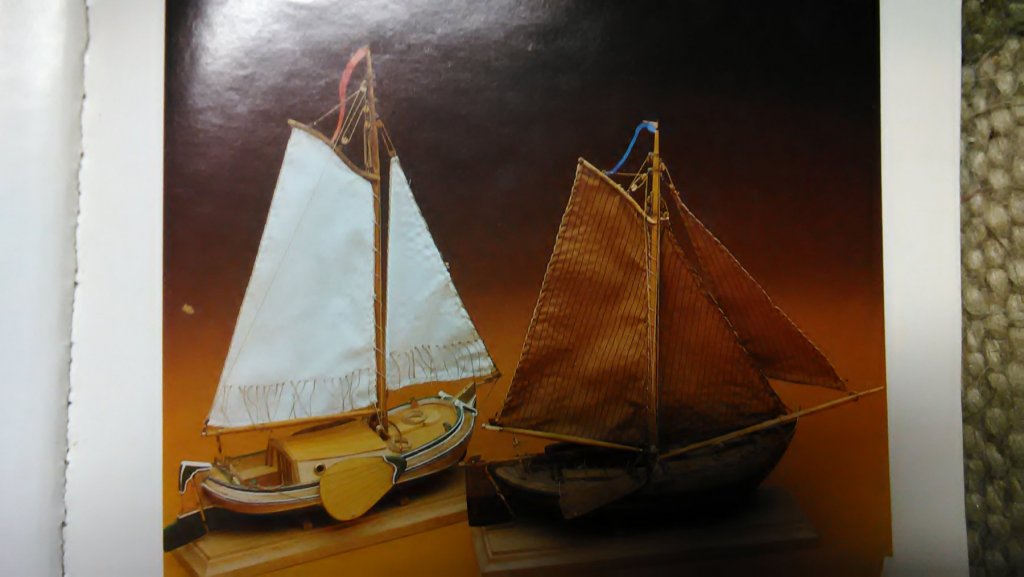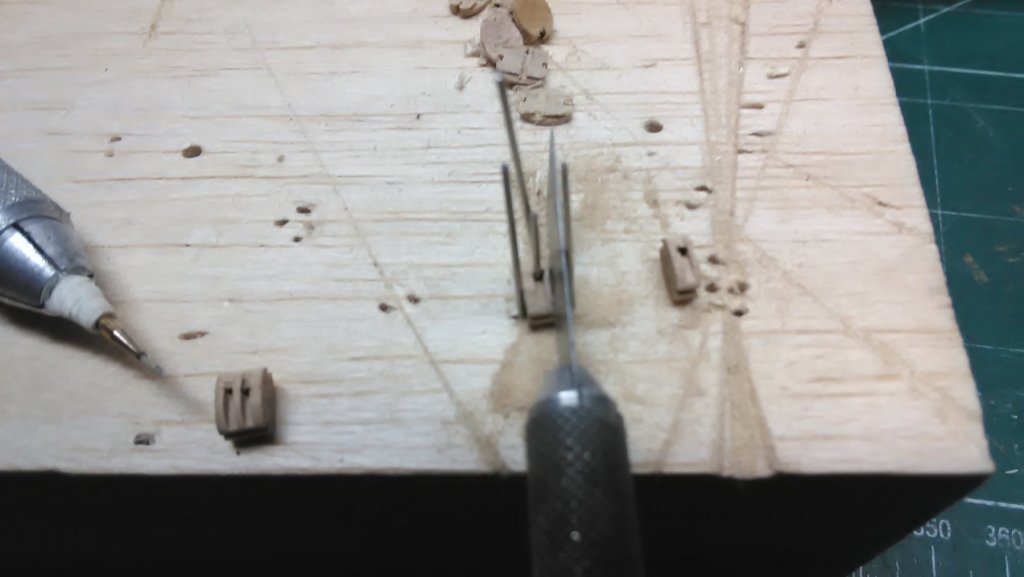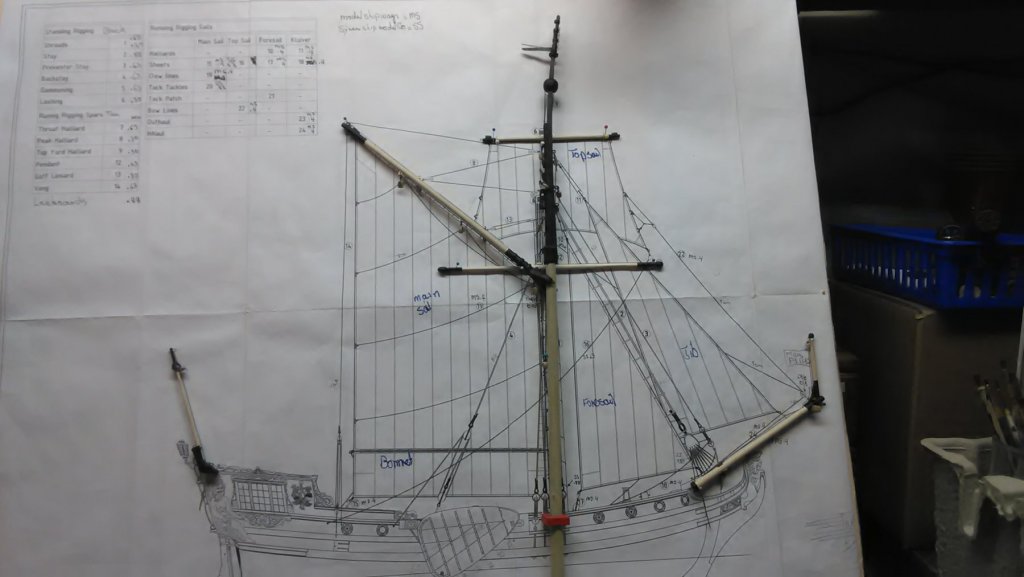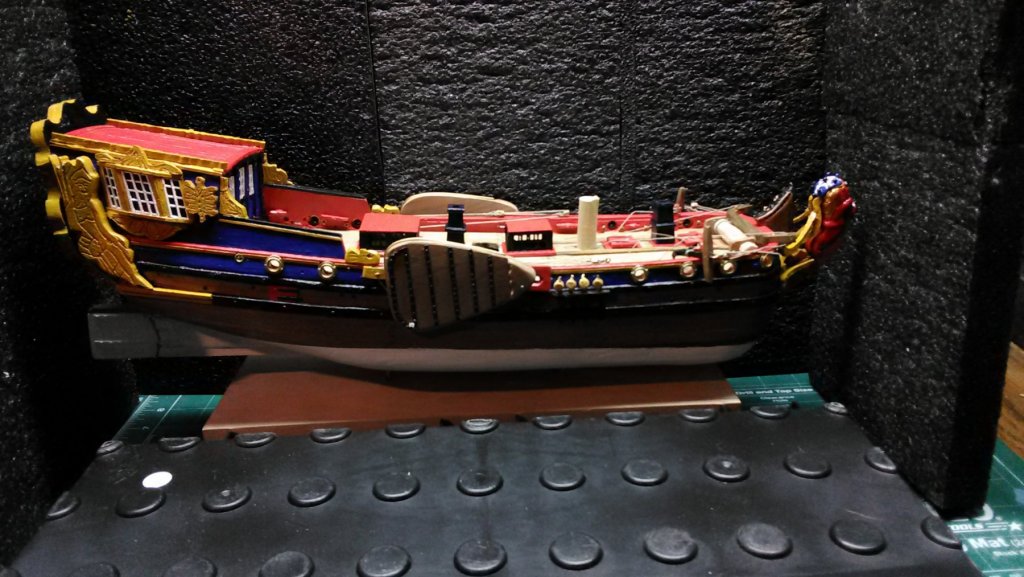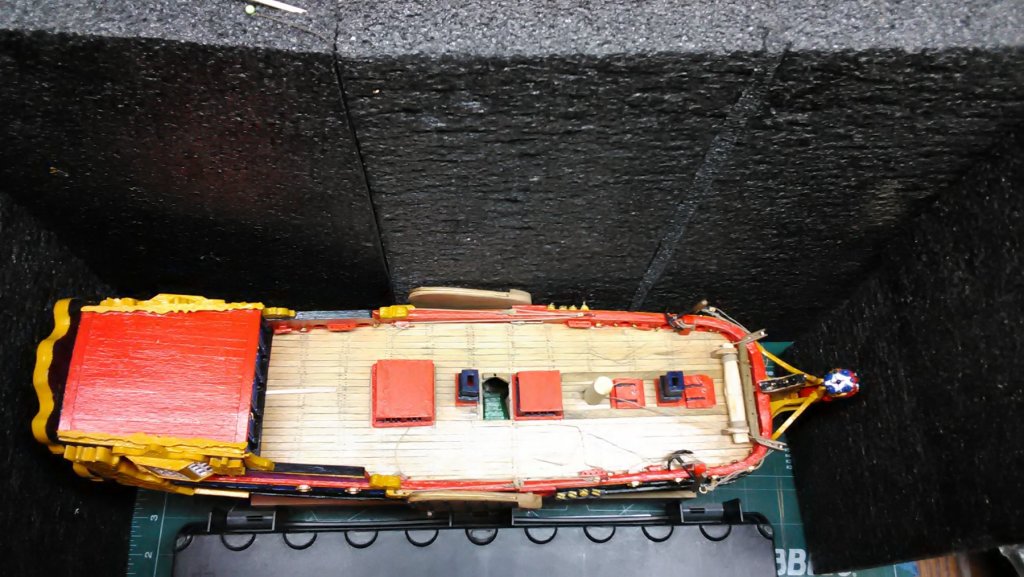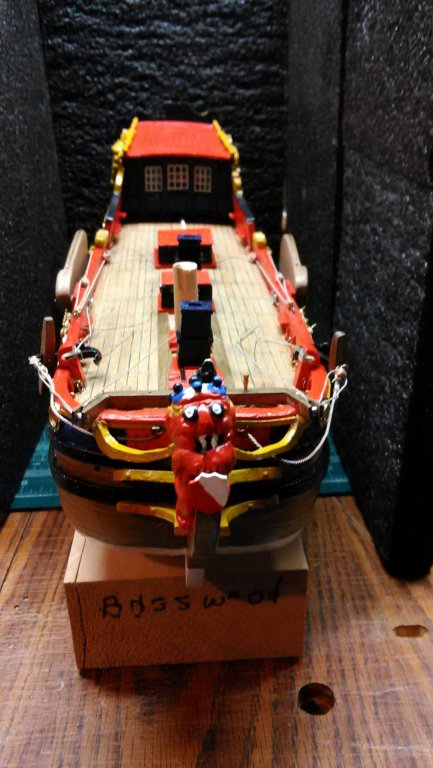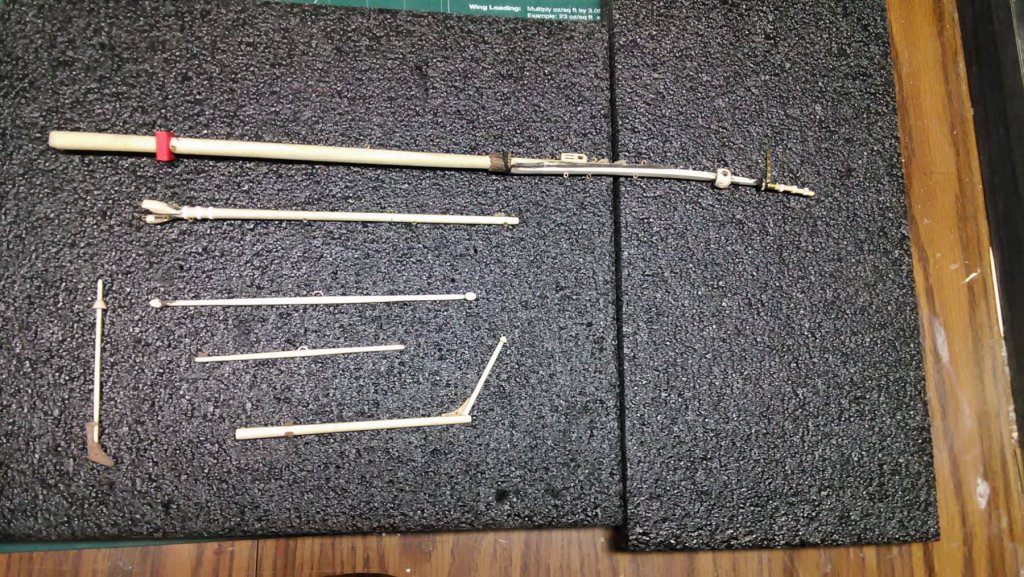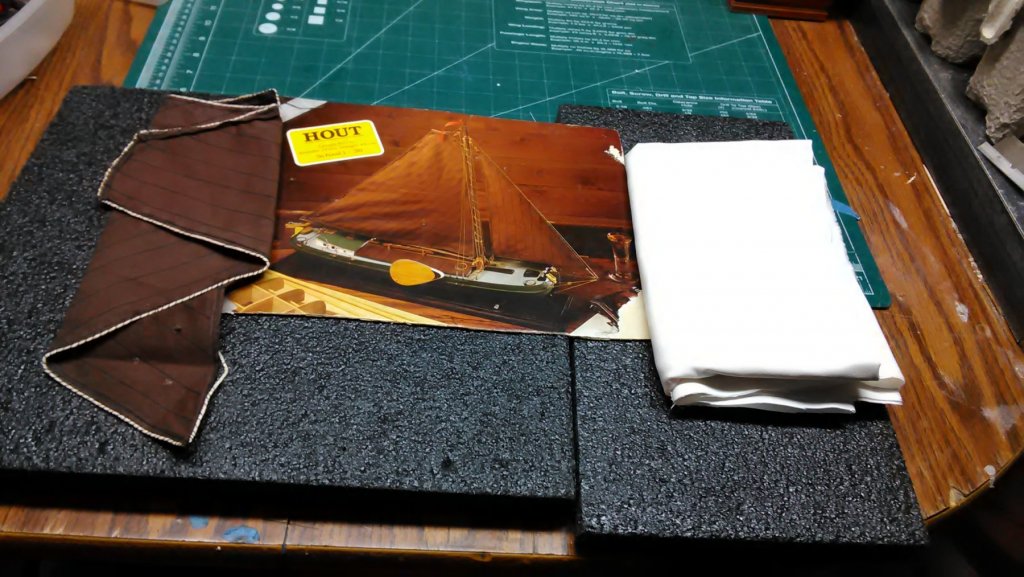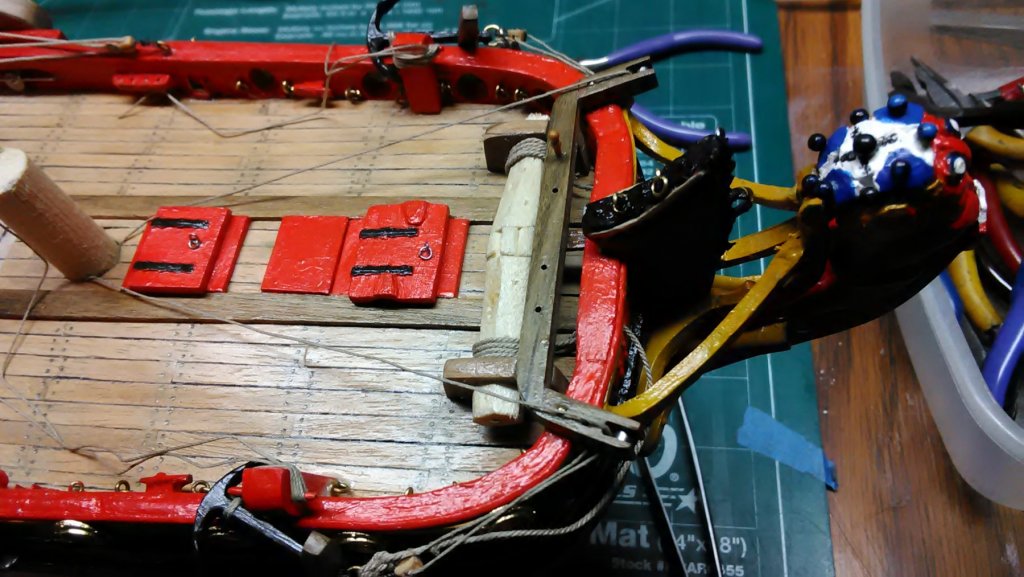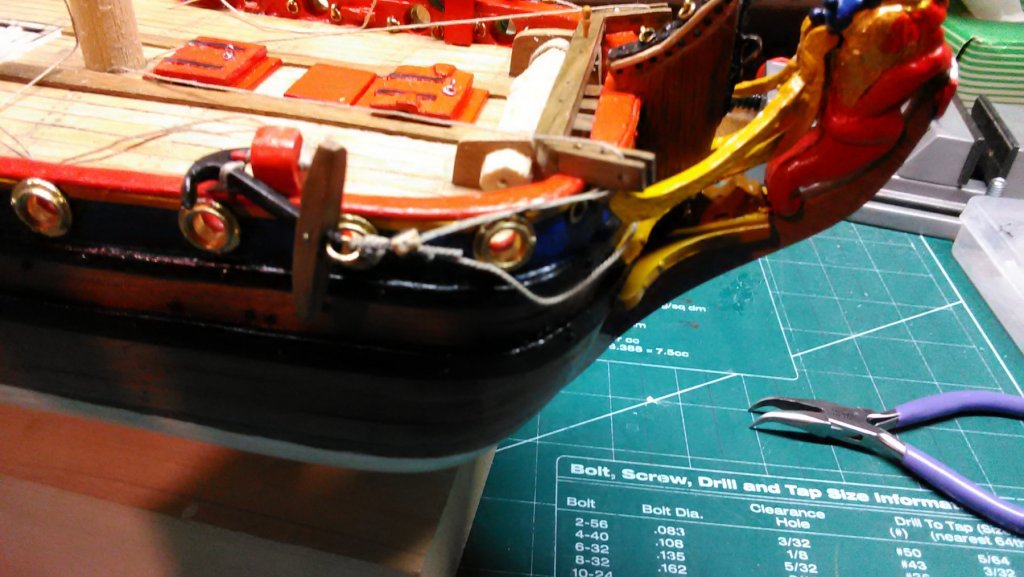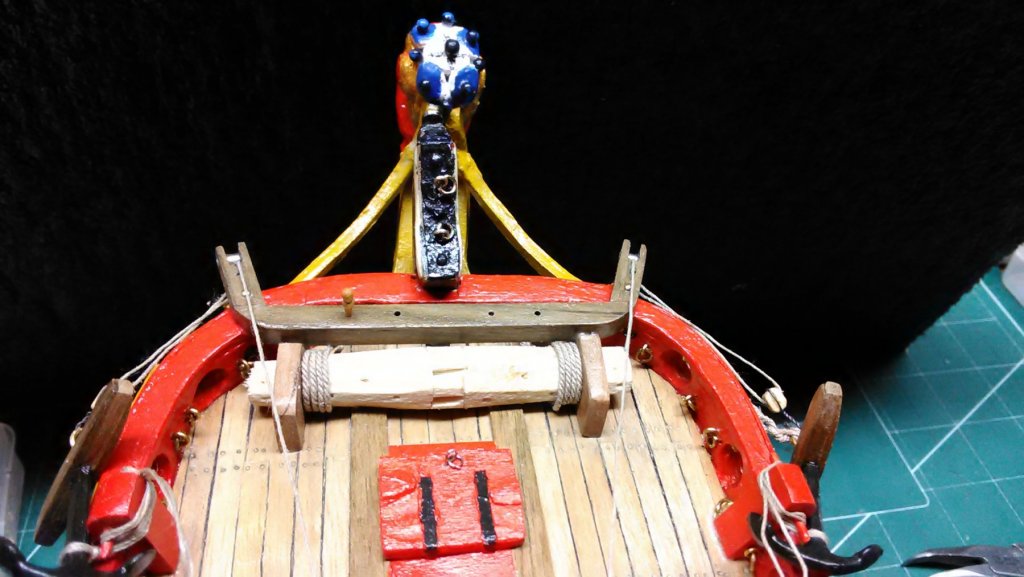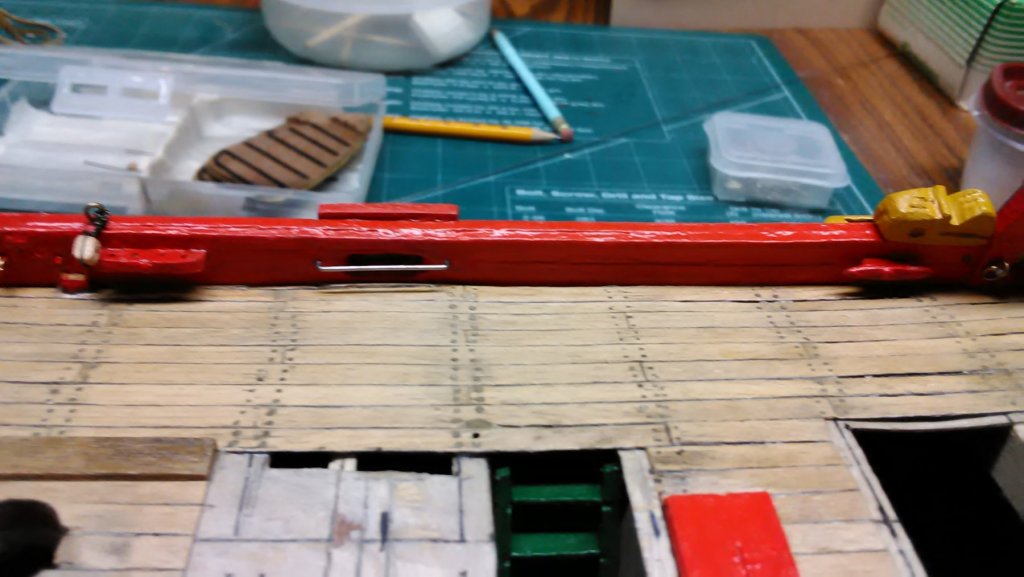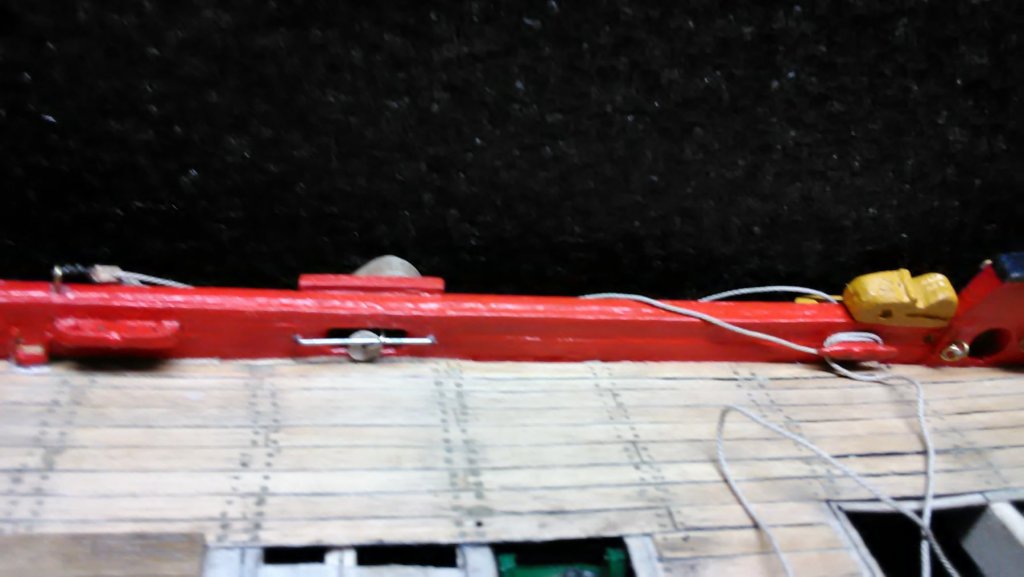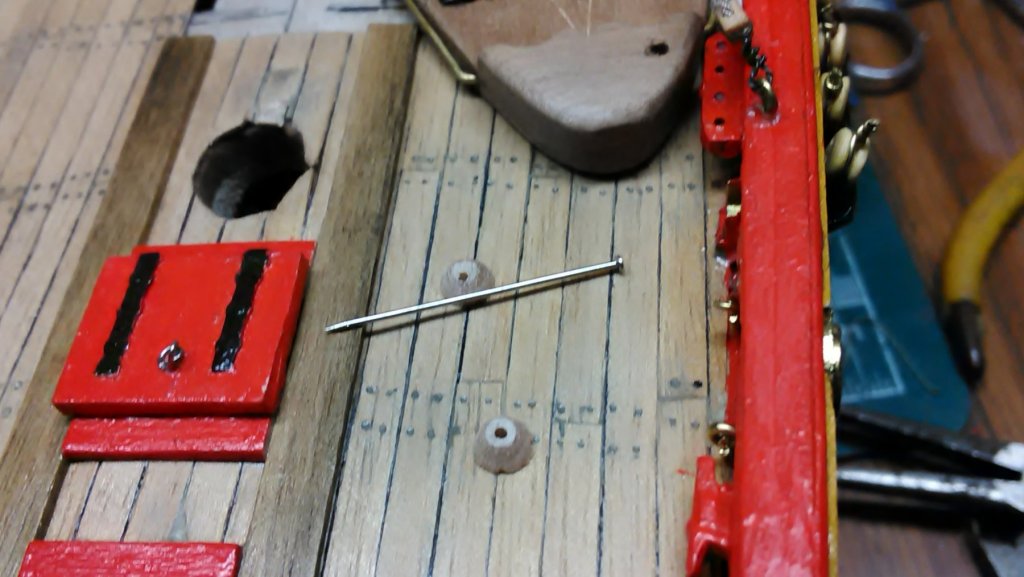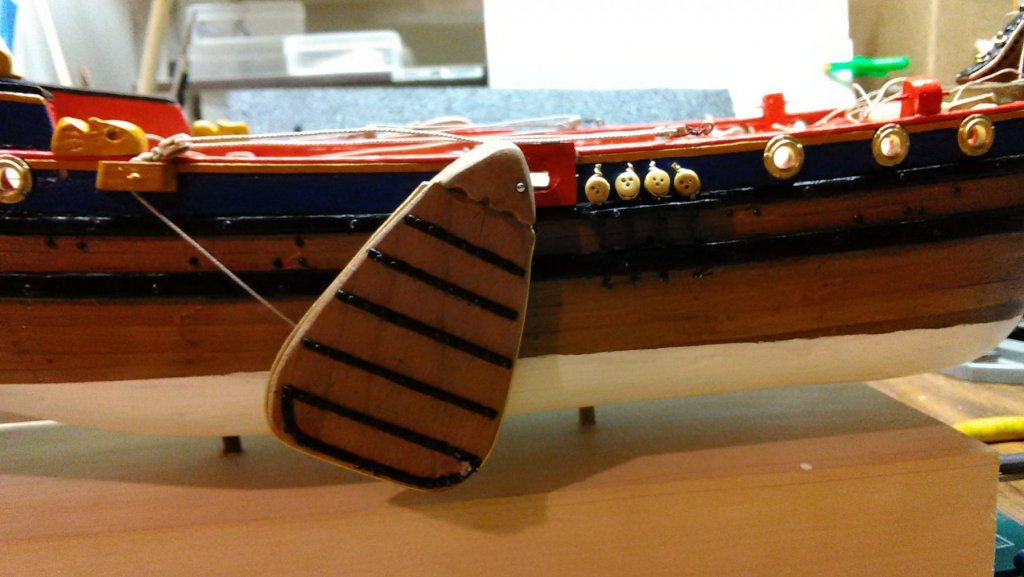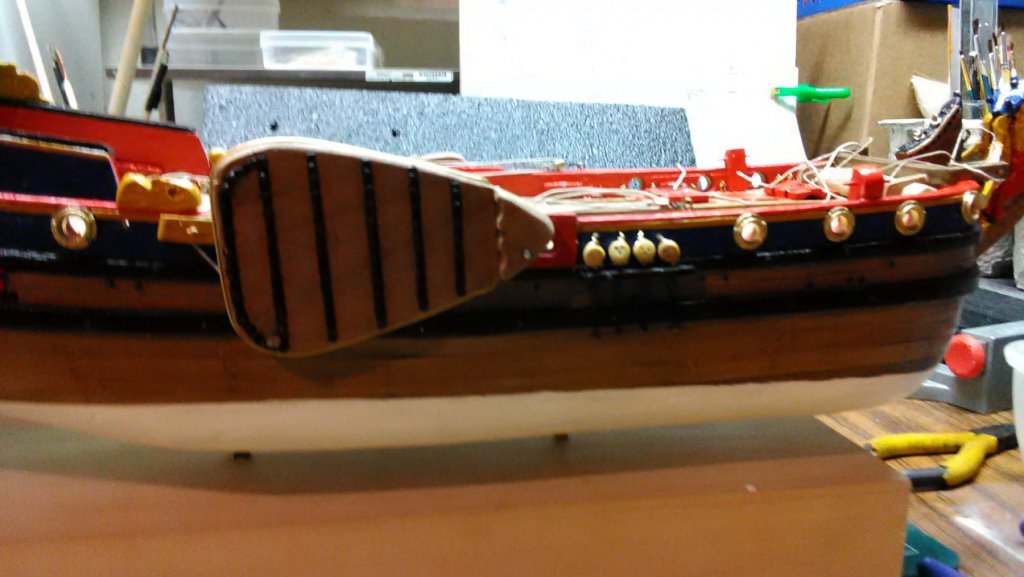-
Posts
1,735 -
Joined
-
Last visited
Content Type
Profiles
Forums
Gallery
Events
Everything posted by flying_dutchman2
-
Installed all the ratlines and instead of a drop of glue I use "Hard as Nails - Extreme Wear". It is clear dries quickly and you can cut the ends off very close to the shrouds. For people who don't know what this is. Women use Hard as Nails on there brittle nails or to cover nail polish. Also installed the topsail and working on the foresail and jib. Marcus
- 305 replies
-
- utrecht
- statenjacht
-
(and 1 more)
Tagged with:
-
On the Utrecht replica there are no ratlines but they are shown in the plans. Decided to follow the plans and install them. Maybe the yacht is a too small of a boat for needing this. My other models I built in the 80's didn't have them either. I wonder when you install ratlines and when you don't? What is the formula for this? Any books out there that will give me an answer? I am going to ask my club members for this one, or maybe anyone of you know the answer. Marcus
- 305 replies
-
- utrecht
- statenjacht
-
(and 1 more)
Tagged with:
-
Finished making about 30 belaying pins and not all are the same. But I do have enough. All standing rigging is installed and permanently fixed (no going back). Next is the running rigging which will be the vangs, these are two sets of roping attached to the end of the gaff tied down close to the pavilion. Then attach the sails. Marcus
- 305 replies
-
- utrecht
- statenjacht
-
(and 1 more)
Tagged with:
-
Thanks for the comments Piet and Cog and all the likes. Finished all the sails and the standing rigging. Didn't have any belaying pins so I am making them myself. Stick a 2mm in diameter and 5cm in length in the dremel. This is fastened to the dremel drill press set up at a 90 degree angle. So the dowel is facing me. Dremel at lowest speed and use micro files to shape the pin. Average about 5 minutes per pin. Works great. Marcus
- 305 replies
-
- utrecht
- statenjacht
-
(and 1 more)
Tagged with:
-
Question and I think Jan can answer this as he knows the Utrecht by heart. How are the back stays connected? On the railing or the deck? Thanks. Marcus
- 305 replies
-
- utrecht
- statenjacht
-
(and 1 more)
Tagged with:
-
Mast and bow sprit are in. Still need to do the shrouds. None of the rigging is permanent yet. All roping is loose. I learned that lesson a few ships back. Keep everything loose so you can adjust it here and there. Once it is permanent it is difficult to adjust. Started on the sails stitching and adding bolt rope. The topsail is a dark brown sail I scavenged from a tjelk that broke from my last move. Both foresail and jib are stitched but no bolt rope yet. The main sail will be stitched next. I also made a pdf of how I make sails. Towards the end of the built I will show how I do it. Yesterday at my woodworkers meeting the treasurer gave me a Dremel Moto Lathe 700. It is a small one. Next week I am going to attempt making belaying pins with it. Should be fun to try. Also going to try canon barrels from wood. Marcus
- 305 replies
-
- utrecht
- statenjacht
-
(and 1 more)
Tagged with:
-
The barrel and the carriage look great. Couple of those on the deck is going to look good. Initially I thought of adding canons to the Utrecht but in the end omitted this as the boat is a pleasure yacht eventhough the plans call for it. Now that I see what Chuck's material looks like, once I do a fluit, I will order them from him. Marcus
-
Installed the mast, but not glued, the mast ring is glued to the deck. I never glue the mast. The shrouds will hold that. Served the shrouds. The clamps on the mast hold levels to make sure that the mast stays straight. The hemostats hold all the roping taught. Marcus
- 305 replies
-
- utrecht
- statenjacht
-
(and 1 more)
Tagged with:
-
Popeye 's tip is good. I do something similar. Collect the saw dust from the wood you are sanding. Add just enough white glue to make a paste. Mix well and then apply to the area. I use toothpicks. I also use it in areas to strengthen parts. Once dry it sands well and it is strong. I keep it handy in syringes and in different colors. Marcus
-
Jan, Thanks for the pictures. I followed the example and it turned out great. Now working on the many blocks that need an eye or a hock. Will dye the sails Monday with black tea. Then cut them out, do some stitching, and add bolt rope. Marcus
- 305 replies
-
- utrecht
- statenjacht
-
(and 1 more)
Tagged with:
-
I need to get that boek from Versteeg. Is it still in print? I built all four of them and Friese tjalk anno 1900. Wanted to get that King Size 32 pounder Cannon at the scale of 1:12 length was 40 cm but it was beyond my price range. My ships moved from Holland to Africa to the US back to Holland and in storage. Salvage the sails and using the tjalk's main sail for my Utrecht's topsail. Marcus
-
I am always antsi when putting in the main mast. Measured many times to see if it rests on the floor of the hull and at the same time that it is at the height of the deck according to plans. This time the mast was too short by 6mm. So I added a piece of dowel of that length and glued it into place. Now it is good. Also the piece of wood that goes across the deck that holds the sheet block for the main sail wasn't curved enough, so I redid this. Just need to cut to length and sand down. The mast cleats are too big. Have to redo them as well. Measured the sails by using card board templates. Once I do the sails I will show how I do this in a step-by-step manner with lots of pictures. Marcus
- 305 replies
-
- utrecht
- statenjacht
-
(and 1 more)
Tagged with:
-
Very few boeier kits were made, but there was one from the Authentic Shipmodels Amsterdam. I built it in the 80's. Still have the catalog. This company made a series of four flat bottom boats. Their description of a boeier is as follows. "With an authentic boeier there are no straight lines. Everything is round. Nowhere on the boat is a flat surface. Boeiers were luxury yachts of the 19th century and you still see them on the lakes in the Netherlands. The picture below is from the catalog, it is the one on the left. On the right is a botter (built that too) . Marcus
-
Piet thanks for the comment and everyone else for the likes. I inherited lots of double and triple blocks and very few single. So I have been making singles from doubles. The setup below shows how. First I make the hole larger with dental drill reamer. Then fit the double block through one pin. The pins are stainless steel rods cut to size. Then I saw the block to get a single. Works great. Mast and spars have been painted with Mars black acrylic paint from Golden. Blocks have been attached. Once I start on the sails I will show the way I do it with a step by step faq. Also give some references that talk a little about sails. Marcus
- 305 replies
-
- utrecht
- statenjacht
-
(and 1 more)
Tagged with:
-
On another note, looking through all my books, shop notes, ships in scale, the NET etc., there is so little information about sails. It is a shame because most of us built "sailing ships". I would have thought there is more information about this subject. Maybe I need to write a Faq about this........... thinking..... Marcus
- 305 replies
-
- utrecht
- statenjacht
-
(and 1 more)
Tagged with:
-
I am a bit late, I just saw this thread and have a few comments. I built the Mary as well and working on the Utrecht (scratch). With flat bottom boats such as yachts and many other Dutch Ships planking the hull is a completely different ball game. It is not like the other models you see here on MSW. It is an exercise of extreme bending. I start with the wales first than a few planks below the lower wale. There isn't much of a garboard stake. I align the plank straight next to the keel and let it flow naturally, going straight up at the bow. You will install many steelers When you're facing the bow, your wales need to be straight. I know you cannot change that now. Your last picture shows that you are forced to start at the keel and work your way up. Just lay the planks and let them flow, don't force the curve. When you reach the completed planking there will be lots of measurements. Overall the planking that is completed is well done. With the Utrecht I used walnut as the second planking. I soak the planks for about 4 to 5 days and over bend them because walnut springs back a bit. When the are soaked I lay them down on the hull and use push puns, clamps and whatever I can find to hold it down. After they are formed I use Elmer's white glue to glue them in place. Wales are also walnut but I laminate them to get the thickness. This has worked well for me for several boats. Search for Utrecht and Mary under flying_dutchman2. The Utrecht built has many planking pictures. This would take a long written description. I built only Dutch Ships and have built several flat and round bottom boats. Similar ships of extreme plank bending would be the Endeavor. Marcus
-
First couple of pictures are from the boat without mast, spars, sails and rigging. Next, the finished mast and spars which are still unpainted. I will be adding a few extra items such as blocks for the flags. I am not going to just glue them to the flag pole and bowsprit. Still working on the blocks and deadeyes. Went to Joann's fabric store and bought a yard of tightly woven cotton fabric. While looking through their items, I compared it with left over sail cloth from past boats and sail cloth from former Dutch boats I built in the 80s that did not survive all the moving from country to country. In the picture on the left is brown sail cloth from a Friesian tjalk that I will be using for the topsail. In the middle their is a picture from the kit (from the Authentic Shipmodel Company, Amsterdam, no longer in existence) on the right the cloth I purchased today.The topsail will be washed together with the off white cloth, ironed, stretched, sails traced on it, hemmed, bolt rope attached, and final installation. The brown cloth already has the lines stitched in and lucky for me is that the distance between them is the same as the Utrecht. Marcus
- 305 replies
-
- utrecht
- statenjacht
-
(and 1 more)
Tagged with:
-
Piet, thank you for the comment. Will work a little less on the boat because of the Olympics. Gotta see the speed skating events where the Dutch will take several medals. It won't be like Sochi where the Dutch took 23 out of 36 medals, but it will be good. The Dutch have dominated this event for as long as I remember. Start working on the curved top mast which will be attached to the mast. Marcus
- 305 replies
-
- utrecht
- statenjacht
-
(and 1 more)
Tagged with:
-
Placed the two anchors. I initially made 2 just in case one didn't look good but that wasn't the case. So I opted to install both. The anchor ropping is attached to the ring using a Fisherman's bend. I have been reading my rigging books and want to use the appropriate knots for all the rigging. In the past I didn't care so much about what it looked like. As I want to create a more authentic model from the era, the correct knots is the way to go. Plus it is good practice. The anchor hawser was then passed through the port bow hawser hole, then made four turns about the windlass. The a anchor tackle was made from a single 5 mm block with a hook and suspended on a 0.30mm tan line fixed to the cathead, through the cathead sheave and will be belayed on the pin rack. Marcus
- 305 replies
-
- utrecht
- statenjacht
-
(and 1 more)
Tagged with:
-
Installed the leeboards. Used Chuck's 0.63mm tan rigging line. I made little round caps and drilled little holes into them. Used a metal pin which goes through the leeboard then a cap then through the metal plate that has a filed oval opening, the second cap and under the metal slider (stainless steel) and than the pin is curved around this slider. Made it as authentic as possible. In the book of the Utrecht it is on page 94, and Jan put a picture of it on this thread. I like the way it turned out. The leeboards can move up and down and lateral. Marcus
- 305 replies
-
- utrecht
- statenjacht
-
(and 1 more)
Tagged with:
-
Patrick, Beautiful sleek boat. Excellent work. The details are amazing. I will say it again, you are the "king" of itty-bitty scale. Marcus
-
Piet, Thanks for the comment. She's coming along. Before I place the anchors, I need to paint the bottom white. Either by brush with acrylic white or spray can. I don't have an airbrush. Then after that I'll give her a coat of polyurethane to protect the acrylic paint from scratching and coming off. Marcus
- 305 replies
-
- utrecht
- statenjacht
-
(and 1 more)
Tagged with:
About us
Modelshipworld - Advancing Ship Modeling through Research
SSL Secured
Your security is important for us so this Website is SSL-Secured
NRG Mailing Address
Nautical Research Guild
237 South Lincoln Street
Westmont IL, 60559-1917
Model Ship World ® and the MSW logo are Registered Trademarks, and belong to the Nautical Research Guild (United States Patent and Trademark Office: No. 6,929,264 & No. 6,929,274, registered Dec. 20, 2022)
Helpful Links
About the NRG
If you enjoy building ship models that are historically accurate as well as beautiful, then The Nautical Research Guild (NRG) is just right for you.
The Guild is a non-profit educational organization whose mission is to “Advance Ship Modeling Through Research”. We provide support to our members in their efforts to raise the quality of their model ships.
The Nautical Research Guild has published our world-renowned quarterly magazine, The Nautical Research Journal, since 1955. The pages of the Journal are full of articles by accomplished ship modelers who show you how they create those exquisite details on their models, and by maritime historians who show you the correct details to build. The Journal is available in both print and digital editions. Go to the NRG web site (www.thenrg.org) to download a complimentary digital copy of the Journal. The NRG also publishes plan sets, books and compilations of back issues of the Journal and the former Ships in Scale and Model Ship Builder magazines.



